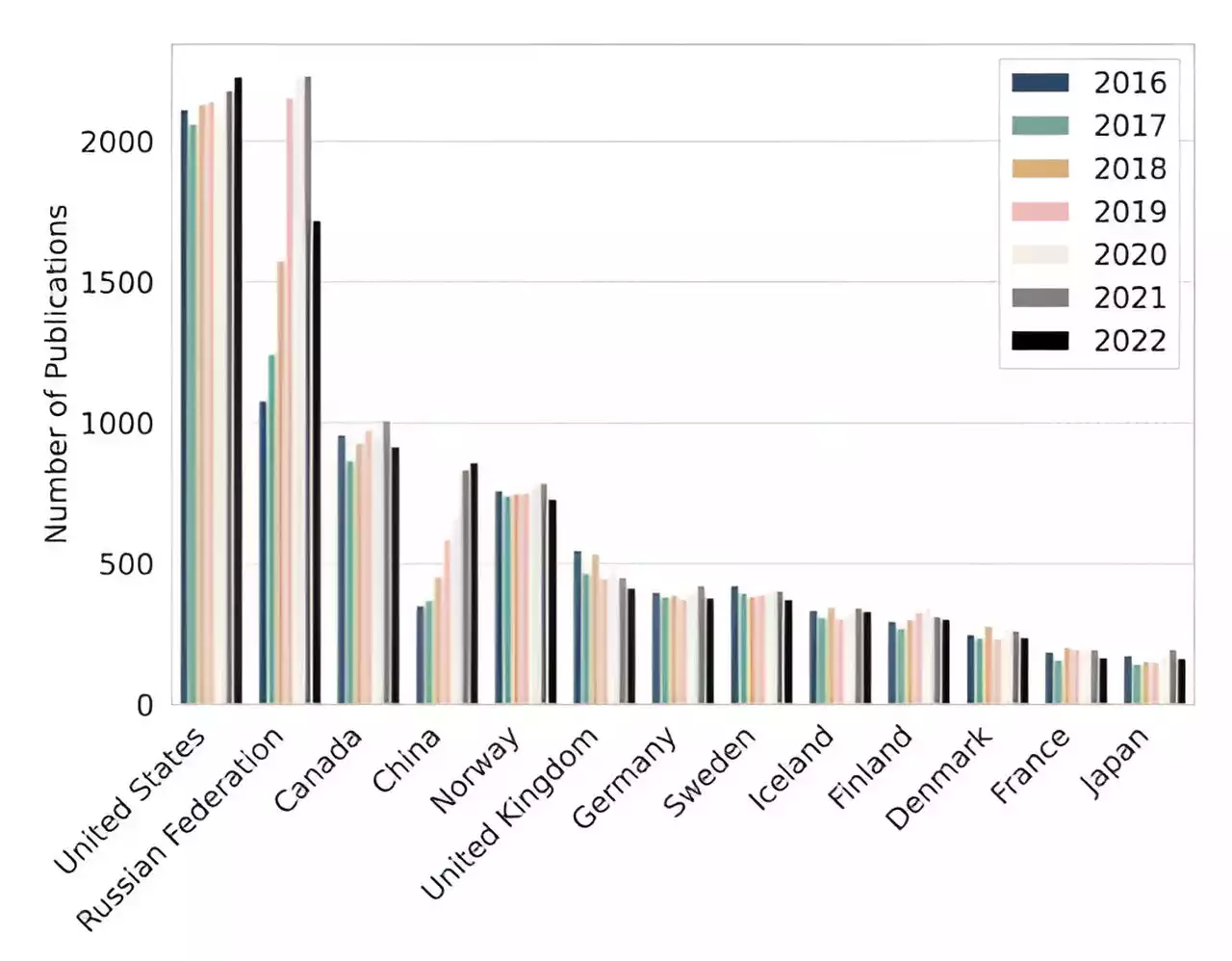A new report shows that beavers are advancing into Arctic tundra, leading to more methane being released into the atmosphere.
ANCHORAGE, Alaska - A study published this summer and headed by University of Alaska Fairbanks researchers points to beavers having an increasing role in greenhouse gas production in the Arctic., published in the journal Environmental Research Letters, links Arctic beavers to rising rates of methane gas increases in the region.
The identification of beavers as another source of methane is also important because of the gas’ role as a potent greenhouse gas, noted in the report as about 25 times more powerful than carbon dioxide when it comes to trapping heat within the earth’s atmosphere. “We’ve got beavers moving into the Arctic, and we’ve got all these ponds,” Tape explained. “The reason we know beavers are moving into the Arctic is, they make a footprint that you can see from space, and you know that there’s beavers there, right? So, from space, we mapped over 10,000 beaver ponds in the Alaska Arctic.
Rod Boyce, also of UAF, broke the paper down by starting with the creature’s propensity for constructing dams.
United States Latest News, United States Headlines
Similar News:You can also read news stories similar to this one that we have collected from other news sources.
 Watch ‘Top of the Times’: Biden cancels oil, gas drilling leases in Alaskan Arctic wildlife refugeTune in as senior congressional reporter Kerry Pickett discusses today’s top stories.
Watch ‘Top of the Times’: Biden cancels oil, gas drilling leases in Alaskan Arctic wildlife refugeTune in as senior congressional reporter Kerry Pickett discusses today’s top stories.
Read more »
 Arctic research grows and strengthens international cooperation: ReportA new report by UArctic highlights the growing diversity and number of research activities across the Arctic. UArctic is a collaboration between academic institutions and other organizations with an interest in northern regions. The report demonstrates a high degree of international cooperation and presents Arctic research trends.
Arctic research grows and strengthens international cooperation: ReportA new report by UArctic highlights the growing diversity and number of research activities across the Arctic. UArctic is a collaboration between academic institutions and other organizations with an interest in northern regions. The report demonstrates a high degree of international cooperation and presents Arctic research trends.
Read more »
 Making Arctic field geology accessible by digitizing outcropsThe Svalbox Digital Model Database (DMDb) just made its formal debut into the scientific community in a new article published in the journal Geosphere.
Making Arctic field geology accessible by digitizing outcropsThe Svalbox Digital Model Database (DMDb) just made its formal debut into the scientific community in a new article published in the journal Geosphere.
Read more »
 Scientists identify how the dissection of Arctic landscapes is changing with accelerating climate changeResearch co-led by Simon Fraser University and the University of British Columbia shows that amplified global warming in the Canadian High Arctic drove a profound shift in the structure of a river network carved into a permafrost landscape in only 60 years.
Scientists identify how the dissection of Arctic landscapes is changing with accelerating climate changeResearch co-led by Simon Fraser University and the University of British Columbia shows that amplified global warming in the Canadian High Arctic drove a profound shift in the structure of a river network carved into a permafrost landscape in only 60 years.
Read more »
 Shifting Streams: How Climate Change Is Redefining Arctic River NetworksIntensified global warming has transformed Canadian High Arctic river networks over 60 years, influenced by freeze-thaw cycles and flooding patterns. New research underscores the urgent need for predictive models to forecast future Arctic environmental shifts. New research co-led by Simon Fraser
Shifting Streams: How Climate Change Is Redefining Arctic River NetworksIntensified global warming has transformed Canadian High Arctic river networks over 60 years, influenced by freeze-thaw cycles and flooding patterns. New research underscores the urgent need for predictive models to forecast future Arctic environmental shifts. New research co-led by Simon Fraser
Read more »
